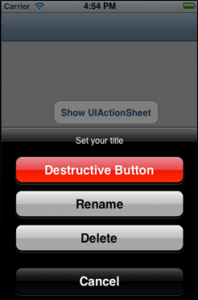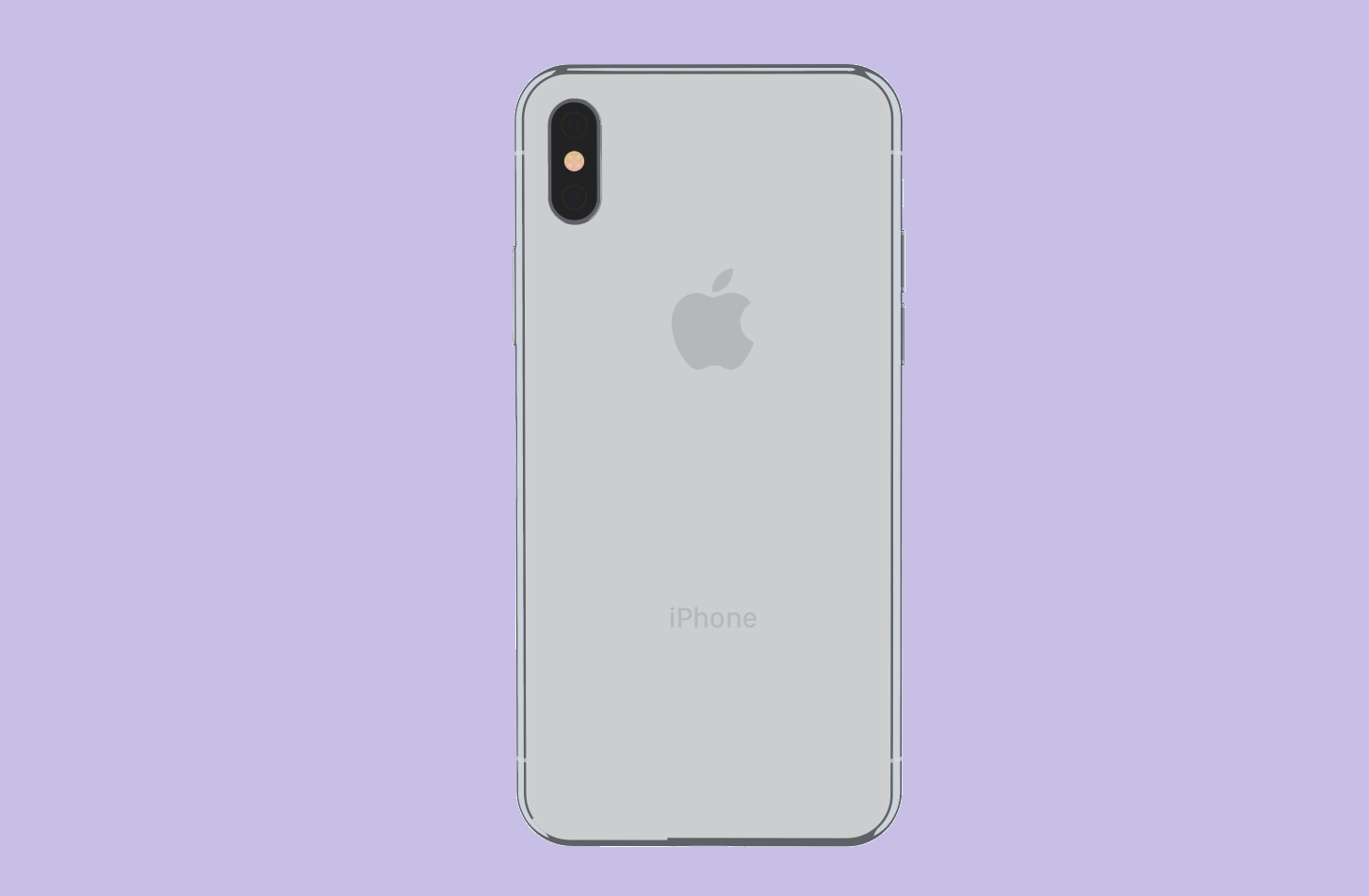
What is UIActionSheet
The action sheet in iOS contains a title and one or more buttons. Each of the buttons is associated with separate actions. It can be presented from a toolbar; tab bar, button bar item or from a view, however the title can be optional.
Why use UIActionSheet?
UIActionSheet is used in the following cases:
- To show an option for a given task
- To prompt the user to confirm an action
- To get user input
Action sheet is dismissed by touching anywhere outside the pop-over.
How to use it?
- Extend the UIActionSheetDeleagte in the .h header file of the ViewController
- Then add a method named as”showActionSheet”
Example
[sourcecode]@interface MyViewController : UIViewController {
…
}
…
-(IBAction)showActionSheet:(id)sender;
@end[/sourcecode]
Initializing the UIActionSheet takes 5 following parameters
- initWithTitle
- delegate
- cancelButtonTitle
- destructiveButtonTitle
- otherButtonTitles
Add the following code in the .m file of viewcontroller.
Example
[sourcecode]-(IBAction)showActionSheet:(id)sender {
UIActionSheet *popupQuery = [[UIActionSheet alloc] initWithTitle:@"Set your title" delegate:self cancelButtonTitle:@"Cancel" destructiveButtonTitle:@"Destructive Button" otherButtonTitles:@"Rename",@"Delete", nil];
popupQuery.actionSheetStyle = UIActionSheetStyleBlackOpaque;
[popupQuery showInView:self.view];
[popupQuery release];
}[/sourcecode]
How to know which button was clicked by user?
There is a delegate method named as “actionSheet clickedButtonAtIndex” in which you can get the action.
[sourcecode]-(void)actionSheet:(UIActionSheet *)actionSheet clickedButtonAtIndex:(NSInteger)buttonIndex {
switch (buttonIndex) {
case 0:
NSLog(@”%@”,Destructive Button Clicked);
break;
case 1:
NSLog(@”%@”,Rename Button Clicked);
break;
case 2:
NSLog(@”%@”,Delete Button Clicked);
break;
case 3:
NSLog(@”%@”,Cancel Button Clicked);
break;
}
}[/sourcecode]
Conclusion:
UIActionSheet gives additional choices to the users for a particular action & gives a cleaner look to the app.
